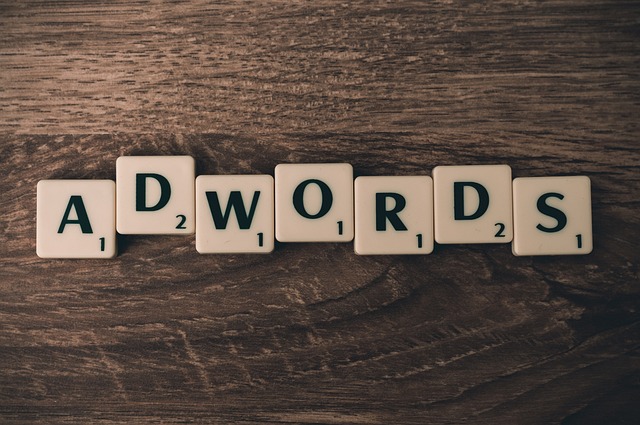This Marketing Briefing covers the latest in marketing for Digiday+ members and is distributed over email every Tuesday at 10 a.m. ET. More from the series →
If the last five years have taught us anything, it’s that chaos may be tough, trying and certainly worrisome — but it’s ultimately manageable. That’s the general sentiment among brand marketers, ad agency execs and industry analysts when you ask them to make sense of the current economic landscape amid tariff back-and-forth.
“I’m expecting chaos,” said Jeremy Whitt, executive media director at Hanson Dodge. “One thing I want to make sure that we don’t have too short of a memory of what happened back on March 15, 2020.”
Marketers should remember what happened in the early days of Covid and operate in similar ways now, explained Whitt, who noted that marketers weren’t prepared to pull back to the degree that they needed to when the pandemic hit. Whitt believes marketers should keep those lessons in mind, putting the proper provisions in contracts and preparing to toggle from brand build advertising to performance marketing as needed and vice versa.
Whitt isn’t alone in the Covid analogy. Three other marketers and agency execs shared the same sentiment. “Covid primed us for this environment,” said Carrie Tropeano, chief media officer, Mekanism. “This is naturally how we plan now — maybe not to this extreme forecasting and re-forecasting.”
The disruption that the pandemic caused to marketing in 2020 is the “best analogy that we have in terms of similarities,” said Katya Constantine, CEO of Digishopgirl Media. “The one big difference is that during Covid, we had a stimulus package to help support the economy and consumer behavior. Here we don’t.”
The stock market has had series ups-and-downs amid the topsy-turvy tariff tension. Movement in the stock market has been closely tied with the chaos of the tariffs. On Monday, for example, the stock market rose after the announcement that smartphones, chips and computers would be except from new reciprocal tariffs. Whether or not that boost will last, we’ll have to see.
While marketers have a reference point in Covid — becoming comfortable with flexibility and constant replanning — this moment isn’t a one-to-one comparison. Marketers are seemingly having to get used to doing business in limbo. They’re making plans despite price and advertising shifts without a clear end in sight.
This time last week, the consequences of President Trump’s tariffs were starting to set in. Marketers were planning to start cutting ad budgets this quarter to manage the effects of the tariffs. Then, last Wednesday, President Trump announced a pause on reciprocal tariffs for 90 days — aside from China. That pause hasn’t necessarily changed the game for marketers and agency execs who say they’ve been constantly replanning, forecasting and re-forecasting since the plans for tariffs were announced.
“The feeling is that unless there’s a steady turnaround in the next 90 days, they’re planning for the chaos to still be there 90 days from now,” said Whitt. “No one knee-jerked in reaction.”
Aside from assuming that chaos is the norm and replanning will continue, marketers are relying on agencies to “push the bounds of our tools and capabilities,” said Tropeano, adding that the agency is getting more questions around how they can use “media mix modeling and attribution solutions to more quickly figure out ways to optimize our full marketing mix instead of just looking at our media mix.”
At Mekanism, they have a “good, better, best” scenario planning system for clients. For example, “if tariffs are full steam ahead and costs are really high and consumer purchasing is down, then we’ve got this baseline plan. We don’t want to go fully dark, we have to make sure we have some baseline media that’s running,” Tropeano said.
Marketers and agency execs aren’t just planning for clients when it comes to the chaos of the moment. While that’s the general focus, there are also questions around what it means for their businesses in the short and long-term. Danielle Wiley, founder of influencer marketing shop Sway Group, is trying to determine which businesses aren’t affected by the chaotic tariff environment to mitigate some of the worries of the impact on businesses she works with today. Wiley isn’t alone in asking that question. It’s starting to bubble up at agencies.
“There’s a lot of worry right now but no one is in panic mode,” said Whitt. “But we’re all waiting for that shoe to drop.”
3 Questions with Jessica Serrano, CMO at fast casual restaurant Dig
As a New York City-centric restaurant chain, Dig has expansion plans it’s currently working through. What does that mean for marketing strategy?
We’ve been experimenting with a lot of different tactics that Dig hadn’t historically used. We have been doing things like streaming audio, which you can buy in a hyperlocalized way. We’ve done CTV for the first time over the last few months and really seen success with that. Then another tactic that I’ve been really bullish on is hyperlocal influencer marketing. We could talk about being in D.C. or whatever, but it resonates more when the foodie that you’ve been following for the last five years goes into a Dig and shows you from her perspective what we have to offer.
Why test CTV and streaming? What role are they playing in the media mix?
Audio is a little bit more of a brand investment. It requires having a balance in terms of the spend. We continue to leverage things that are harder working in terms of performance, but I’m pretty adamant that it’s important that we carve out some dollars for things like audio, CTV, and even a little bit of out-of-home just so that we’re making sure that we’re also telling more of that why, and not only telling the what of the new menus here. It’s not the most efficient tactic but still an important one.
There’s a lot of uncertainty right now and marketing spend is under scrutiny. How does all of this impact the role of a CMO?
The CMO role has evolved quite a bit to, in some ways, almost be interchangeable with chief growth or chief revenue officer. It really isn’t enough to hang your hat on building brands. You have to demonstrate that the brand that you’re building is driving impact to the business. Maybe CMOs of the past were focused on numbers tied to marketing metrics, like CPMs, but really today it starts with the actual business figures. You’ve really got to be able to speak to both sides, be the expert on the marketing side, but also really understand the P&L and how the tactics that you’re doing are impacting it. — Kimeko McCoy
By the numbers
As brands continue to navigate the so-called culture wars, politicization and polarization, brand safety is likely to be top of mind when it comes to where ad dollars are spent. Taking it a step beyond brand safety, positivity, or how users perceive their experience on a social platform, matters. That’s according to new research from Pinterest and MAGNA, a global media intelligence company. See key findings from the study below:
- People surveyed were 20% more emotionally engaged with content they saw on platforms they perceived as positive.
- On average people spent 15% more time looking at ads and had more “lean forward” moments in environments they perceived as positive.
- In the MMM [media mix modeling] simulations, the same creative and finite budget generated up to 24% more sales when brands incorporated viewability and positivity in their media buying strategy. — Kimeko McCoy
Quote of the week
“When I see job descriptions that are asking for 15 to 20 years of experience in retail media, I’m like, but what do you mean? You can’t be asking for 20 years of retail media experience because that just doesn’t exist.”
— Larisa Dumitru, head of commerce for Europe at GroupM, when asked about the retail media talent crunch and whether or not it truly exists.
What we’ve covered
- Creators rethink revenue mix in anticipation of economic slump
- Why price cuts and agency pressure haven’t changed calculus for brands on X
- Retail media was built for growth. Now, it’s being rebuilt for risk
https://digiday.com/?p=575234



